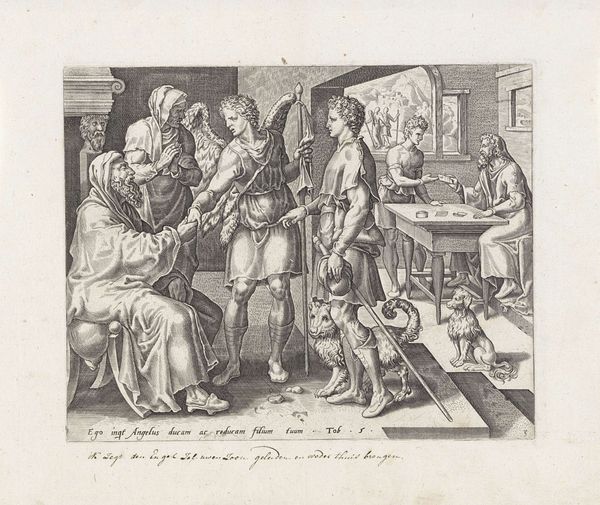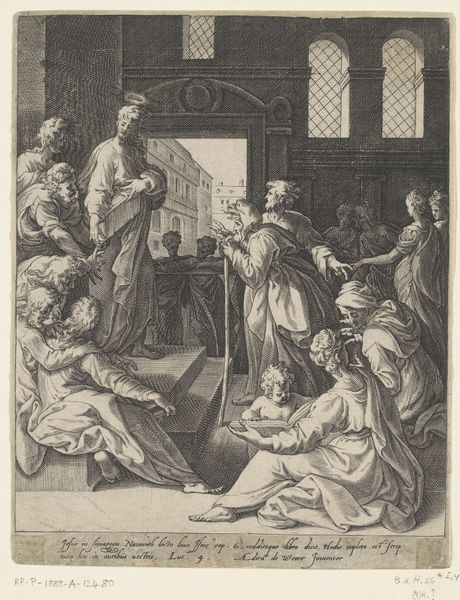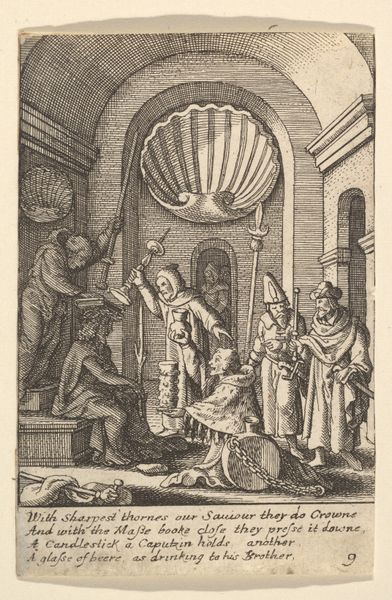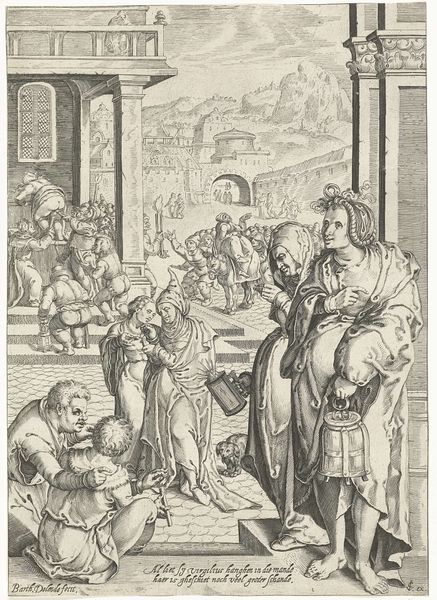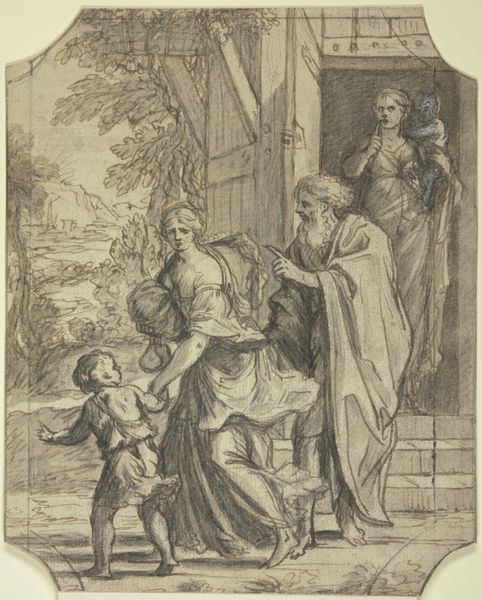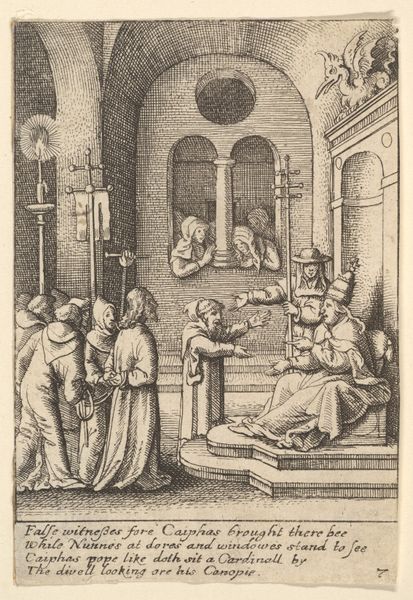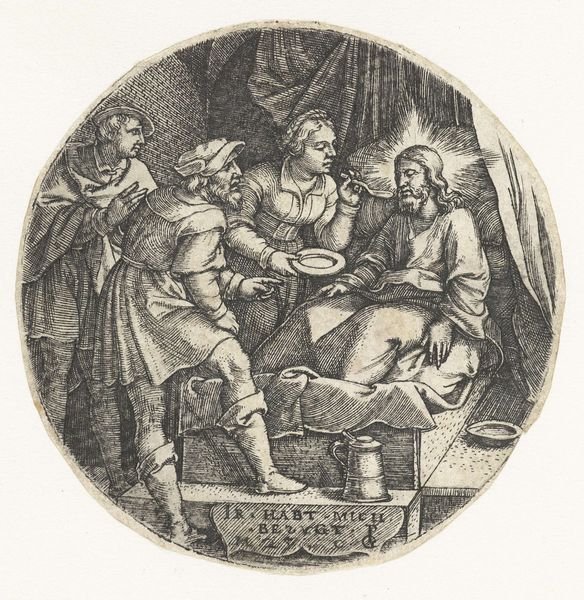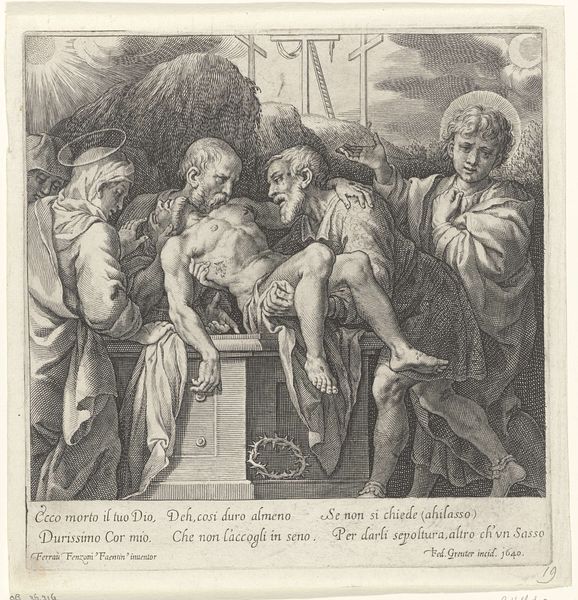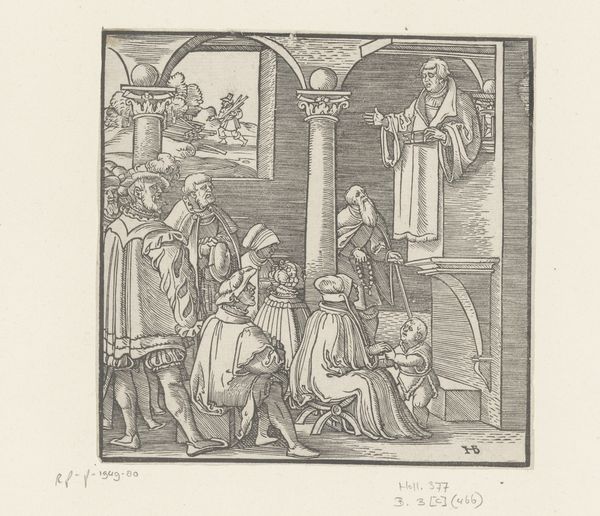
The Presentation of the Infant Jesus in the Temple 1520 - 1550
0:00
0:00
drawing, print, engraving
#
drawing
# print
#
figuration
#
11_renaissance
#
history-painting
#
italian-renaissance
#
engraving
Dimensions: Diameter 8 15/16 in. (22.7 cm)
Copyright: Public Domain
Editor: So, here we have "The Presentation of the Infant Jesus in the Temple," an engraving by Sebald Beham, dating back to somewhere between 1520 and 1550. It's quite intricate, all these figures crammed into this small, circular space. I'm struck by how much detail Beham achieved through engraving. What do you make of it? Curator: As a materialist, I’m fascinated by the process of creating this image. Consider the physicality: the copperplate, the burin, the sheer force needed to carve these lines. Beham was working within a specific system of production – think of the workshop setting, the apprenticeship involved in mastering this craft. How does the commercial aspect influence the art? Editor: Commercial, you mean selling the prints? I never really considered that side of it. Curator: Exactly! These prints were made to be distributed, consumed. The accessibility of prints democratized imagery. Also, consider the social context. The Reformation was in full swing; Beham, though briefly exiled for his radical views, participated in a visual culture grappling with religious reform. Are the textures rough or smooth? Are the lines dense, the surface rich? Think about how Beham manipulated materials to evoke particular meanings and affects, like the contrast between darkness and light? Editor: The shading is amazing given the limitations of the engraving technique, so I see what you mean. Almost like he is sculpting with lines. Curator: Precisely. His skill elevates this from mere illustration to a powerful statement. How might the materiality of printmaking – its reproducible nature, its portability – have served the spread of ideas during the Reformation? Editor: I see this engraving in a totally new light. Considering the materials and process really opens it up! Curator: Indeed! By analyzing its making, its materiality, we access the artwork’s social and historical reality, its circulation, its impact.
Comments
No comments
Be the first to comment and join the conversation on the ultimate creative platform.



